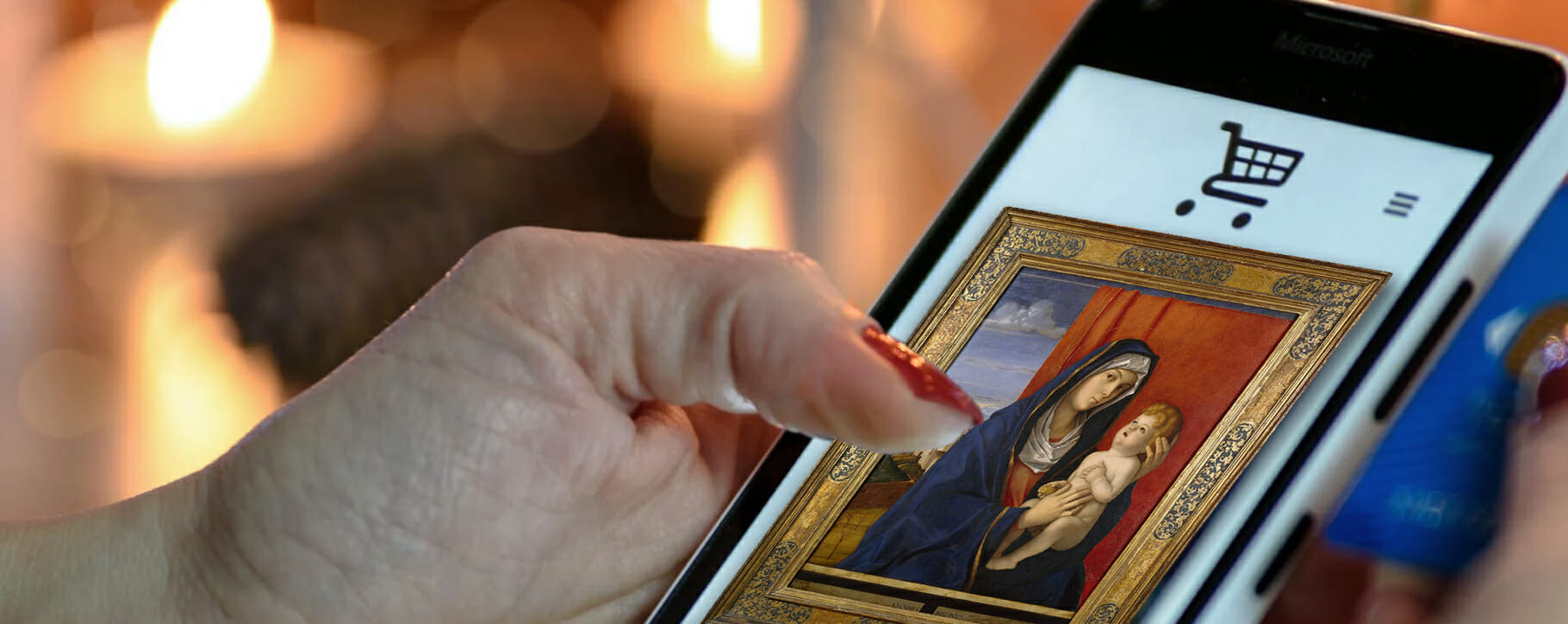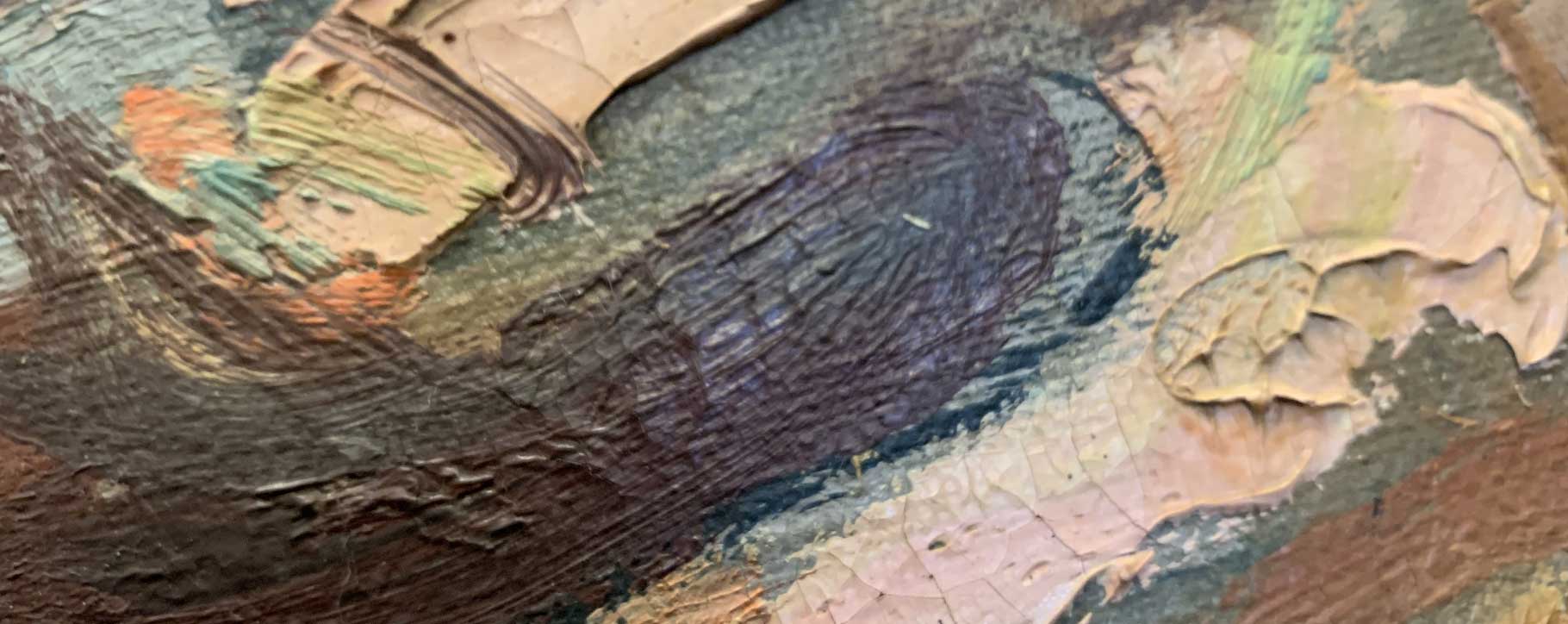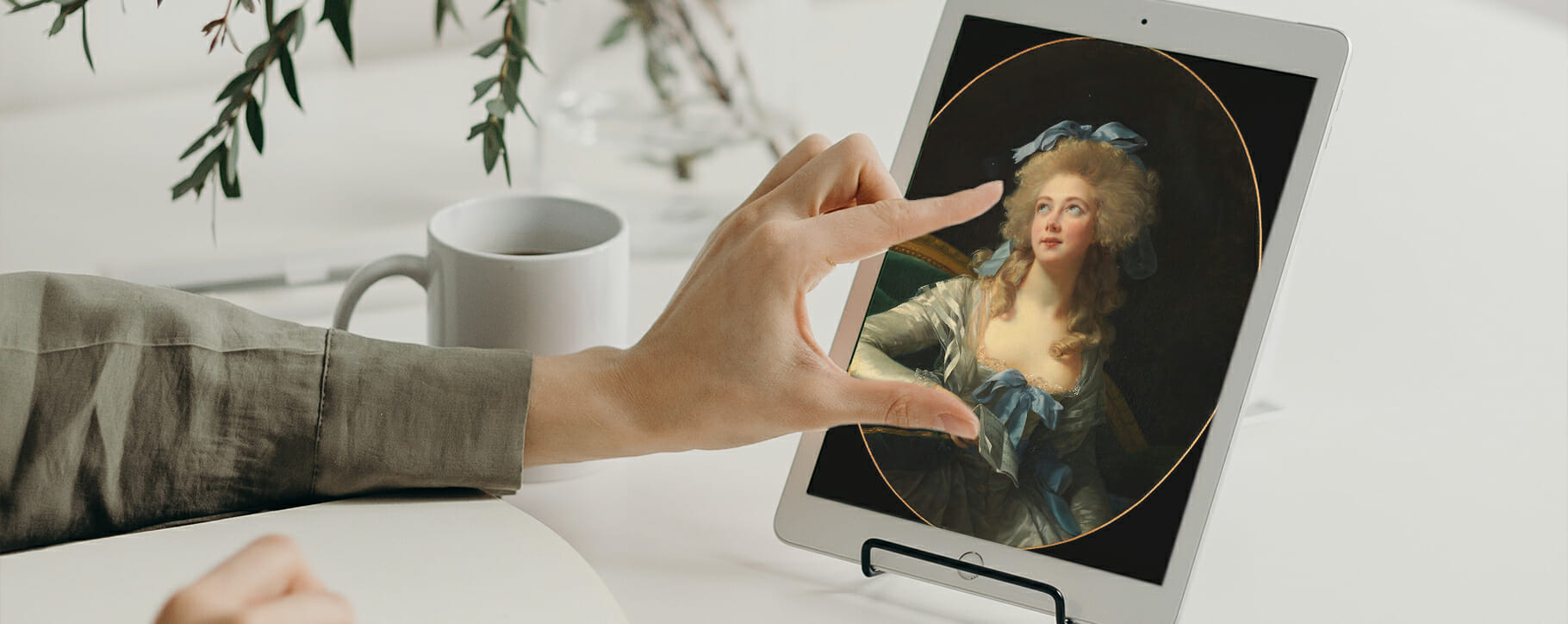
During the COVID-19 pandemic, online shopping has been not only popular but a necessity. Auction houses around the world have been moving to get their sales online for a number of years, but in 2020 online art auctions became a central part of their business. For collectors and enthusiasts the ability to bid online from the comfort of their own home, their office, or on holiday, made what used to be a sometimes long trip to an auction house into a quick and easy purchase. Some may argue that it is the speed and ease of these auctions that have some winning bidders receiving artwork that may not live up to their expectations.
The inability to see pieces in person sometimes results in an expensive mistake over the presumed size, condition, quality, or materials of an artwork. An oil painting may turn out to be darker or more discoloured than the images may have shown, a large piece may be in need of widespread restoration to retain stability, and overall, restoration costs may need to be taken into consideration when up against the sale price.
If artwork is in need of cleaning or restoration work, our team is happy to receive the piece straight from the auction house or to arrange a collection from the sale room. We can then provide a full assessment of the work for consideration, as well as giving a fast quote on the artwork before it is purchased, based on the online images.
This article will highlight some of the details to look for yourself when considering a painting through internet sales, proceeding with a purchase supported by this knowledge should help to avoid any surprises when it comes to the health and quality of an artwork when it is purchased through online auction houses or online auction sites such as eBay.
When buying a painting online…
- DO request a condition report
- DO ask for details on authenticity and provenance
- DO check the surface of the piece for discolouration
- DO request high-resolution images
- DON’T forget photographs may show the piece in the best light
- DON’T leave damaged areas to deteriorate more over time
- DON’T assume that all details are correct online
- DON’T delay in contacting us for conservation advice
Surface details
The first and most obvious signs to look for on an oil painting are in the colouring of the piece. A layer of yellowing or darkened varnish is an indication that the piece will most likely require a surface clean and varnish removal for it to look its best and to be free of any potential contaminants.
A light veil or clouded surface may indicate moisture penetrating the varnish or possible mould spores. This may be in select areas or completely covering the piece. This will require restoration work to remove the affected varnish or mould spores, ensuring that there is no chance of damage to the paint layer increasing over time. Mould may also spread to other artworks, so it is important to have this professionally cleared before it is introduced to its new environment.

Closer inspection may show cracks upon the surface. If this is a fine layer of cracking with no deep or obvious instability, it is probably a natural effect known as ‘craquelure’ which can be spotted upon most oil paintings. If the cracks are wide, deep, jagged, or possibly unstable, this will require treatment to prevent any loss and vulnerability to the raw canvas beneath. Our conservators will use heat and weight treatment to consolidate the painting, also correcting any warping which may have occurred. Flaking pieces can be adhered with non-acidic solutions, and any missing areas of paint can be carefully retouched to protect the painting and reduce visual disturbance.
Where a paint layer is bubbling or of an unusual texture, this may also require consolidation to prevent the paint from becoming unstable. Other lumps and bumps may be due to historic restoration attempts which are visually obvious. You may spot a previous tear repair on the back of the canvas if these images are included, this will present as a patch or darkened area. Whilst some historic repairs will be stable, others may be failing, have contaminating materials, or be visually distracting. Our conservation team can remove historic restoration treatments and replace them with safe and ethical contemporary methods.

Materials and authenticity
When looking closely at a painting you should first look at the details of the material. An oil or acrylic painting often has areas with clear brush strokes or slightly three-dimensional levels. You may see depth in the historic paint pigments, such as the undertones in a skin palette or delicate shades of sweeping drapery. In a modern or contemporary painting, this may be harder to spot, but the artistry can still be picked up in areas of impasto and or weave of the canvas.
If you are able to zoom into the artwork you can look for signs of a lithograph or computer print on canvas. The ink may appear in a uniform pattern, ignoring any detailed brushstrokes. Sometimes there may be rows of dots or lines, and in more modern prints you may spot pixelated areas.

Oleographs are a type of art print that mimics a painting, sometimes giving the piece a textured surface to try and appear more convincing. These easily reproduced decorations have been around since the 19th century, so older pieces may still be considered antiques and their age could make them harder to spot. These are often sold in traditional or gilded frames, replicating copies of famous works of art. Look carefully for printing patterns and for signs of true brushstrokes and depth of shades, as an oleograph will likely be flatter in tones than a true painting and the colours may have faded or distorted. If you are uncertain, our team will happily examine the photographs and give feedback. If a piece is purchased and you are still unsure of the material, we can also assess this in person to give a conclusive answer.
When it comes to seeking authenticity, a named or associated artist should have some documentation of provenance to back this up during the sale. If there is uncertainty or a missing signature, our team can look into this for you following the auction. Sometimes signatures are revealed following restoration work. You can find out more about this process here.
Whilst well-known auction houses will always give as much information as possible with credible sources, some sellers on online auction sites such as eBay and websites with less regulation may try to increase a price with inaccurate or inflated information. In some cases, the seller themselves may not know that their artwork is not a true oil painting and could be a genuine mistake. It is always worth checking with our professionals if there is any uncertainty.

Signs of severe damage
Severe damage will be clearly visible in most scenarios. This includes holes, tears, severe scratching and paint loss. This obvious instability may drastically lower the cost of the painting in some cases, but you may want to consider the price of restoration for such damage to ensure that the piece does not deteriorate further once it is in your possession.
The further the piece deteriorates, the higher the cost of restoration may be. Therefore, it is important to act fast to stop it in its tracks. For instance, a large tear will allow the canvas to become flexible, encouraging surrounding paint to fall away as it moves. This needs to be stabilised as soon as possible to prevent the continuous loss of the original artwork. The more paint is lost, the more will have to be stabilised and retouched by our conservator. This will also affect the historic and artistic integrity of the piece, which above all else needs to be preserved. If you have purchased a damaged or unstable painting, it is best to contact our team as soon as possible for conservation guidance and fast treatment.

However, purchasing a damaged oil painting is not always a bad choice. You may get a much-lowered price or have less competition in the bidding room. Restoration will help to bring the artwork back to life following this purchase, allowing you to enjoy its original splendour due to the seamless techniques carried out by our professional team.
If you have any queries related to a painting before or after it is sold, whether this is about the materials or possible deterioration of the piece, we will happily offer advice, as well as direct input from our trained conservators who will know exactly what an artwork requires to be in it’s best condition. Our own driver is also available for collections directly from an auction house to our studio, as well as convenient delivery following the restoration treatment or assessment.
You can get in touch with our team for advice and guidance by emailing [email protected] calling 0207 112 7576 or by filling out the form below:






